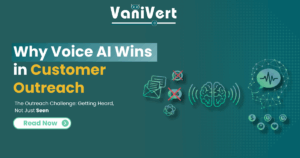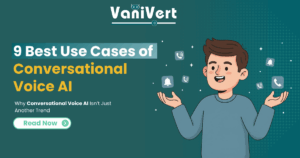Voice AI vs. Chatbots: Which is Right for Your Business?
Published by VaniVert AI | October 22, 2025
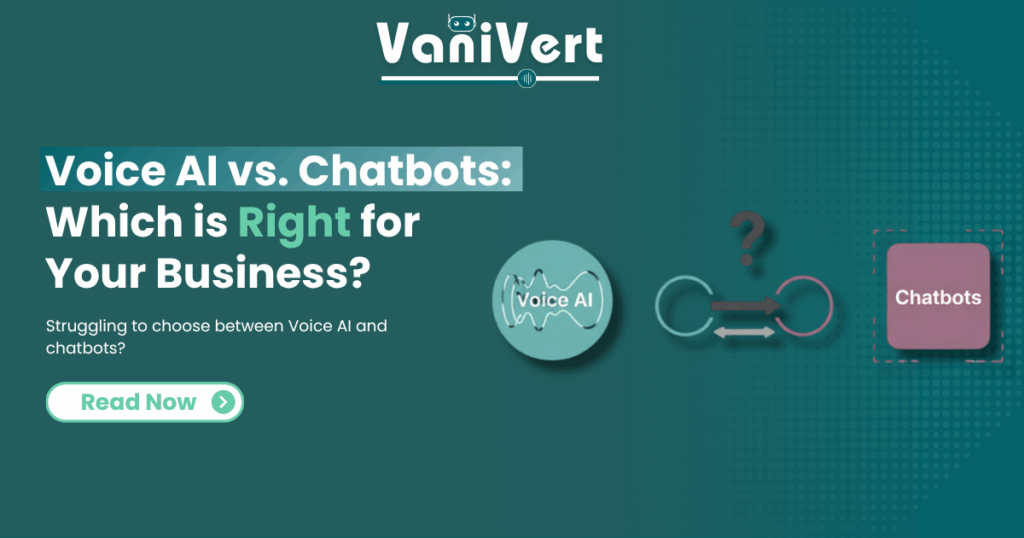
Introduction
Across industries like BFSI, e-commerce, healthcare, and logistics, the pressure to deliver exceptional customer experiences has never been greater. Companies are turning to AI-powered conversational tools to meet rising expectations – yet a critical decision remains: should you deploy Voice AI or chatbots?
The analogy is apt: Voice AI and chatbots are both like musicians – one specializes in live dynamic improvisation, the other excels at structured, repeatable rhythms. Both are essential instruments, but choosing the right one depends on the song your business is playing.
By 2025, the global conversational AI market is projected to grow from $14.8 billion to over $61 billion by 2032, with chatbots and Voice AI leading this revolution. However, engagement success demands more than adoption – it requires understanding how these technologies uniquely impact customer connection, scale, and operational outcomes. (fortunebusinessinsights)
Decision-makers face urgent pressure: poor-fit solutions disappoint customers, inflate costs, and stall digital transformation. Understanding the strengths, limitations, and use cases of Voice AI and chatbots is key to crafting a future-ready customer engagement strategy.
The Engagement Divide: Voice AI’s Human Touch vs. Chatbot’s Text Precision
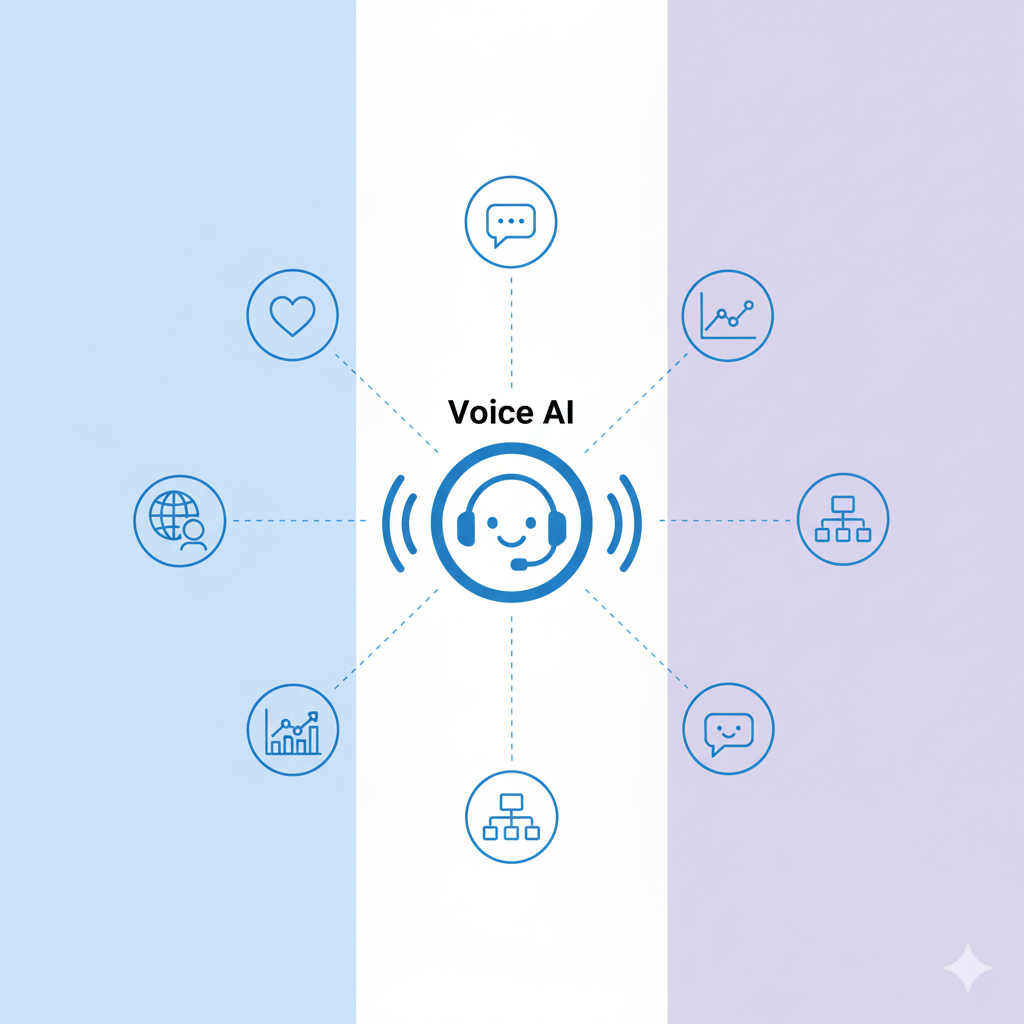
Voice AI is a live actor trained to understand natural speech nuances, including tone and context. It excels at complex conversations, emotional recognition, and delivering multilingual engagement that feels human. Gartner projects that by 2029, agentic AI systems will handle 80% of common customer service issues autonomously, vastly improving customer satisfaction and operational efficiency.
Chatbots succeed in structured interactions – rule-based FAQs, quick information retrieval, and multi-channel text support. Research indicates chatbots can resolve 60-80% of simple inquiries, with faster deployment and lower costs, but often lack emotional depth and contextual understanding.
In essence, Voice AI offers empathy and fluidity, while chatbots prioritize speed and scale.
Industry Lens: Where Each Technology Shines
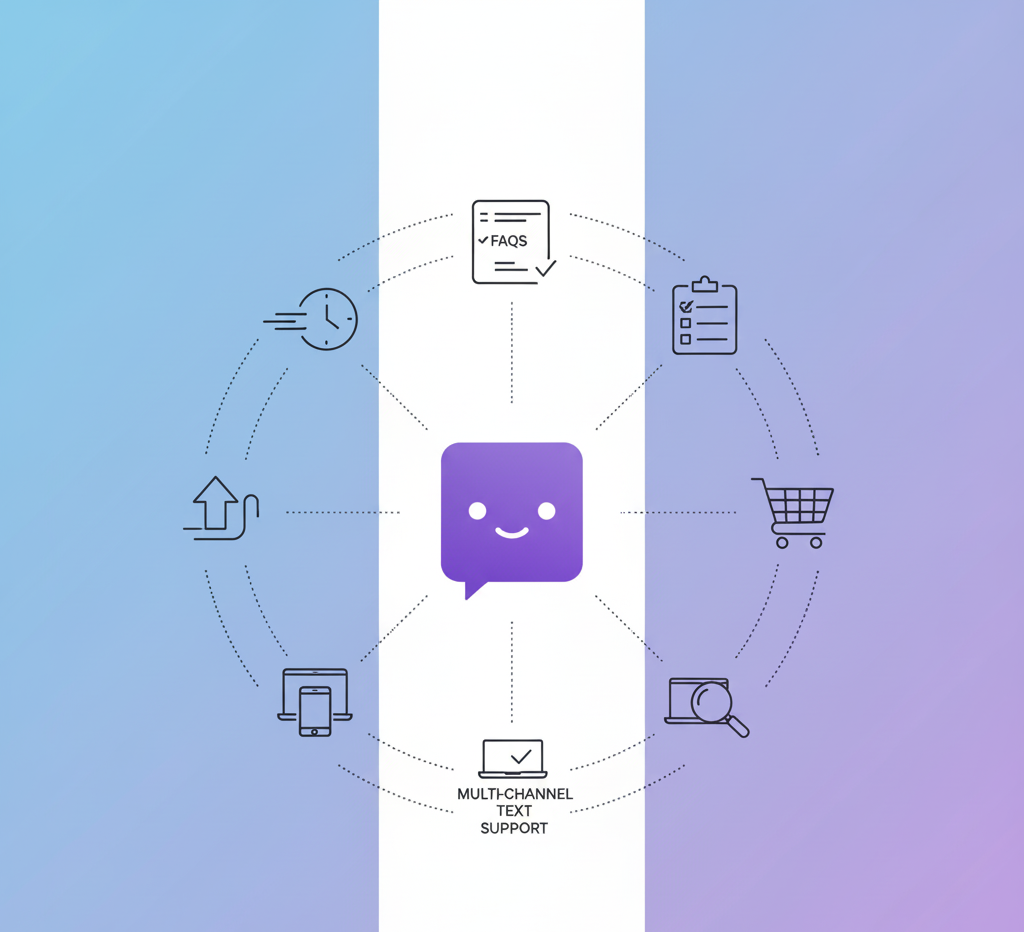
High-touch industries like BFSI, healthcare, and real estate benefit greatly from Voice AI’s personalized interaction, compliance adherence, and ability to handle sensitive conversations with nuance. Voice AI agents reduce average hold time, minimize miscommunication, and handle complex queries requiring judgment.
In contrast, retail and e-commerce sectors widely deploy chatbots for instant product info, order tracking, and lead capture, where transactional speed and 24/7 text-based accessibility are vital. SMBs often adopt chatbots for cost-effective automation without heavy infrastructure.
For contact centers and logistics, hybrid strategies harness chatbots for routine queries, escalating to Voice AI for complex or emotional cases – offering the best of both worlds.
Scalability & Cost: Balancing Investment with Returns
Chatbots are generally less costly to implement and maintain, with scalable cross-platform deployment across websites, apps, and messaging. Yet, their limitation in handling complex scenarios often results in higher escalate rates and reduced CSAT.
Voice AI demands higher upfront investment – including natural language processing, speech synthesis, and integration with telephony infrastructure – but delivers stronger ROI through higher first-call resolution rates, lower churn, and enhanced customer retention.
A 2025 study estimates well-implemented Voice AI solutions reduce operational costs by up to 40% while doubling conversion rates in outbound calling scenarios.
Multilingual Mastery: Voice AI’s Advantage in Diversity
Voice AI’s ability to handle multiple languages and dialects fluently, recognize accents, and dynamically switch language mid-conversation makes it uniquely suited for linguistically diverse markets like India and Southeast Asia.
Chatbots face hurdles in natural language variation and struggle with voice inputs, limiting their effectiveness beyond major languages or scripted text flows.
This makes Voice AI the preferred solution for BFSI, NBFCs, healthcare, and logistics players who need authentic multilingual engagement at scale.
Customer Experience: Emotional Intelligence vs. Efficiency
Voice AI leverages vocal biometrics and sentiment analysis to detect caller mood, adjust tone, and escalate distress cases, creating empathetic and authentic interactions.
Chatbots, meanwhile, deliver consistent scripted responses that maximize efficiency but often lack emotional resonance, which can frustrate customers with complex or sensitive needs.
Research shows customers feel 2.5x more human connection with Voice AI than chatbots, directly influencing brand loyalty and repeat business.
Operational Best Practices: Complement, Don’t Compete
Organizations adopting both technologies as components of an integrated conversational AI ecosystem achieve superior results. Chatbots efficiently filter and handle high-volume, repetitive inquiries; Voice AI agents seamlessly take over complex, high-value interactions.
This hybrid approach aligns technology with customer intent, improves operational agility, and maximizes ROI.
For example, Voice AI complements chatbot platforms by providing voice-based lead qualification, appointment booking, and collections follow-ups – areas where voice’s immediacy, multilingual reach, and human-like flow create outsized impact.
Global Parallels & Market Trends
Global leaders in conversational AI are investing heavily in Voice AI. Companies like Google and Amazon are advancing voice assistants with natural conversation capabilities, while enterprises across the US and Europe deploy voice agents for 24/7 customer support.
Meanwhile, chatbot adoption remains strong in Asia-Pacific for scalable text-based engagement, especially in e-commerce sectors. Emerging markets blur lines, with increasing convergence between voice and text modalities.
The market trajectory is clear: voice and chatbots will coexist and converge within omnichannel customer engagement strategies.
Conclusion: Choosing Your Conversational AI Path
Choosing between Voice AI and chatbots depends on business context, customer expectations, and operational goals. Voice AI offers rich, natural conversation and multilingual reach, ideal for industries where trust and complexity matter. Chatbots drive cost-effective, scalable text automation suited for transactional use cases.
The future lies in orchestrating these tools intelligently – using chatbots to handle scale and voice AI to deepen connection – supported by continuous learning and integration.
VaniVert.ai empowers businesses to harness the power of Voice AI-driven inbound and outbound calling automation, with multilingual AI voice agents capable of lead qualification, appointment booking, collections, and reception handling – delivering superior CX and business outcomes.
The opportunity: embrace conversational AI holistically, not in silos. Leaders who do will outpace competition, delight customers, and redefine engagement in 2025 and beyond.
Ready to See It Work For You?
Related Posts
Conclusion: Voice as the Great Equalizer
- List Item #1
- List Item #2
- List Item #3
How to Build a Future-Ready Customer Communication Strategy with AI
Published by VaniVert AI | October 9, 2025
In a world where customer expectations are constantly evolving, businesses face a critical challenge: delivering personalized, efficient, and scalable communication. Traditional methods are no longer enough. The key to a future-ready strategy lies in harnessing the power of Artificial Intelligence.
The Shift from Traditional to AI-Powered Communication
Customer service is no longer a 9-to-5 operation. Customers expect instant responses and 24/7 availability. AI-powered voice assistants are bridging this gap, transforming call centers from reactive cost centers into proactive, efficient hubs of customer engagement. This isn't just a trend—it's a fundamental shift in how businesses connect with their audience.
Key Takeaways for a Future-Ready Strategy:
- Embrace 24/7 Availability: AI agents work around the clock, ensuring no customer query goes unanswered, regardless of the time zone.
- Automate Routine Tasks: Free your human agents from repetitive tasks like lead qualification, appointment reminders, and basic FAQs. This allows them to focus on high-value, complex interactions that require a human touch.
- Personalize at Scale: AI can access CRM data in real-time to provide personalized conversations, addressing customers by name and understanding their history.
- Leverage Data for Insights: AI doesn’t just talk; it listens. Gain valuable insights from call analytics to understand customer sentiment, identify trends, and continuously optimize your communication strategy.
The VaniVert AI Advantage
VaniVert takes this transformation a step further with advanced conversational AI that delivers natural, human-like interactions. Our platform is designed for businesses with heavy calling volumes, enabling seamless integration and scalable outreach without increasing headcount. The result is a system that not only cuts costs but also builds trust and rapport with every call.


